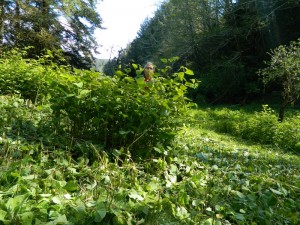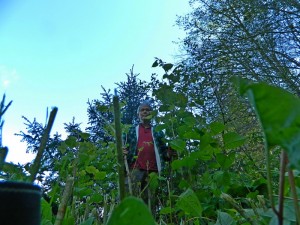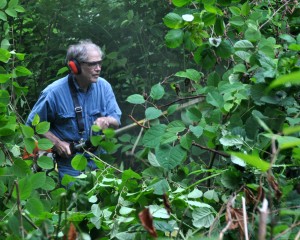April 24, 2015. Along the west bank of Poole Slough, 4 miles east of the Pacific Ocean and Newport, OR. Here begins the first battle of the third year against the dense stand of giant knotweed that took over about an acre of land where an old barn and a few apple trees stood 60 years ago. When the first battle began in late summer 2012 the knotweed stood in an almost pure stand, stalks up to 10 feet high and two inches thick, two or three stalks from one root, plants 6 to 12 inches apart. Although I cut before they flower, the roots send out new stalks all summer and again in the spring. The stalks are hollow cylinders closed off at knots every 6 to 12 inches. Dried stalks make good pan pipes and flutes. Fresh young stalks can be peeled and cooked as vegetables.
Since the plants begin storing carbohydrates in the roots in early summer, I’ll cut again then and again in the fall. As the lower growing natives begin to compete, the prospects are that I can begin regular mowing with a blade set high to allow low natives to grow while preventing the knotweeds from replenishing their roots.
Each year the stand has been slower growing, stalks slimmer, and height diminished. Here is a scene from the very first attack 3 years ago.




